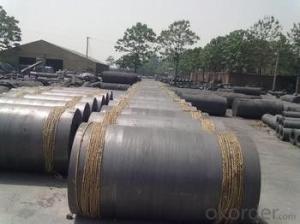The graphite electrode sector is a fascinating world where the dynamics of demand are as intricate as the carbon fibers that make up these essential components for the steel industry. It’s a sector that’s been around for a while, but it’s not one that gets a lot of attention unless you’re deeply involved in it. But let’s dive into the heart of this industry, where the demand for graphite electrodes is a force that shapes the landscape of steel production.
First, let’s talk about what graphite electrodes are. They’re not just any ordinary graphite. These are special, high-quality graphite rods that are used as the anode in electric arc furnaces for the production of steel. They’re crucial in the process of melting and refining metal, and without them, the whole operation would grind to a halt. So, when we talk about demand dynamics, we’re talking about the heartbeat of the steel industry.
Now, the demand for graphite electrodes is influenced by a variety of factors. The most obvious one is the demand for steel itself. When the steel industry is booming, the demand for graphite electrodes goes up. It’s a simple supply and demand relationship, but it’s not as straightforward as it seems. The quality of the electrodes, the efficiency of the furnaces, and even geopolitical factors can all play a role in how much graphite is needed.
One of the most interesting aspects of the graphite electrode sector is the diversity of its customers. Steel producers are the primary consumers, but there are also foundries, smelters, and even some specialized industries that use graphite electrodes for their unique applications. This diversity means that the sector can be resilient in the face of economic downturns, as different industries may experience varying levels of demand.
Another factor that affects demand is technological advancements. As new technologies emerge, the way graphite electrodes are used can change. For example, the development of more efficient furnaces could reduce the need for as many electrodes, while advancements in the quality of the electrodes themselves could increase their lifespan and reduce the frequency of replacement.
Geography also plays a role in the demand for graphite electrodes. Different regions have different levels of industrial development, and this can affect the demand for these products. For instance, regions with a strong steel industry will naturally have a higher demand for graphite electrodes. Additionally, the availability of raw materials and the proximity to customers can influence the distribution and pricing of graphite electrodes.
The environmental impact of the graphite electrode sector is another factor that can’t be ignored. As the world becomes more environmentally conscious, the demand for sustainable and eco-friendly alternatives to traditional graphite electrodes may increase. This could lead to a shift in the market, with companies investing in research and development to create greener products.
But let’s not forget about the human element. The people who work in this sector are passionate about what they do. They’re driven by the desire to create the best possible products and to contribute to the industry that they love. Their dedication and hard work are what keep the sector alive and thriving, even in the face of challenges.
In conclusion, the demand dynamics in the graphite electrode sector are complex and multifaceted. They’re influenced by a range of factors, from the health of the steel industry to technological advancements and environmental concerns. It’s a sector that’s constantly evolving, and it’s one that requires a deep understanding of the market to navigate successfully. For those of us who are part of this world, it’s a thrilling ride, full of challenges and opportunities. And for those who aren’t, it’s a sector that’s worth paying attention to, as it plays a crucial role in the production of one of the world’s most essential materials: steel.

